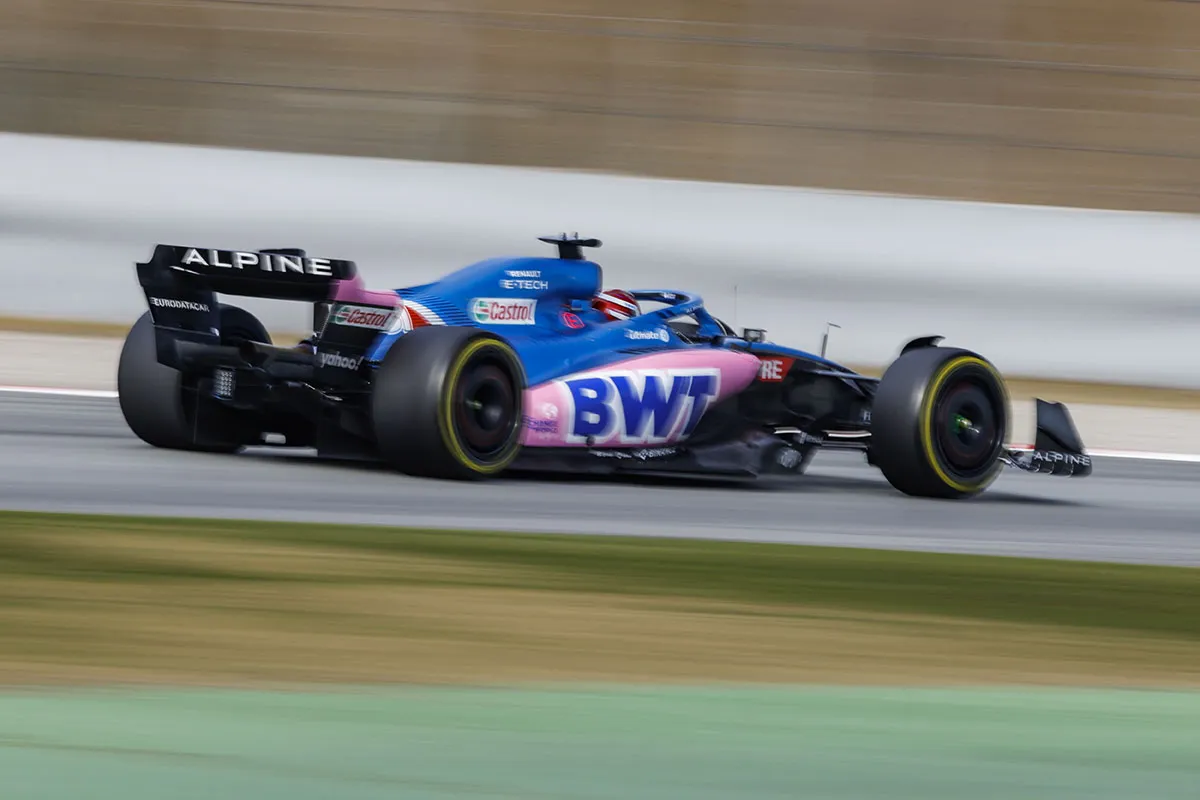This year’s Formula One season has seen a host of changes, making racing more exciting than ever before and giving smaller teams a chance to compete with the big names.
But whether you’re hoping Sir Lewis Hamilton will clinch his eighth title, cheering for reigning champion Max Verstappen or dreaming of one last magical moment from Fernando Alonso, a modern race car is filled with clever ideas that are also helping to save our world.
The focus on aerodynamics is shifting
Formula One invests more in aerodynamics than any other sport in the world: in theory, a Formula One car’s downforce is so strong you could drive it upside down along the roof of a tunnel without falling off!
This year’s aero packages have seen the biggest shake-up in decades, with a shift to ground effect – suction under the car – which is something that’s been abandoned in favour of airflow over the car’s body since 1982. There are also major changes to how cars affect the aerodynamics of their rivals, as just a glance at the 2022 car’s new, stylishly curved rear wings will tell you.
But did you know you use the same aerodynamics that keep these incredible cars on the road every time you buy your lunch at the supermarket? One of the largest costs – both in terms of energy bills and carbon footprint – for supermarkets comes from their open freezer units, as the shelves cause the cold air to spill out.
Today, almost every major chain in the UK uses F1-designed aerodynamic wings on the fridge freezer shelves, which captures the flow of cold air and pushes it back into the fridge.
Fuel is going green
A Formula One engine is an apex predator of the motorworld, with cylinders seeing 50,000 mini-explosions during the course of a lap to drive its pistons, and inside temperatures reaching 2,750°C. But the stuff that’s flowing into the engine is changing this year.
From 2022, Formula One will run on E10 fuel, meaning 10 per cent of the mix is made from ethanol, produced from plants. This is a move to improve the sport’s eco-credentials, albeit at a slight loss of horsepower.
This petrol-biofuel mix is likely to stay until 2025, but F1 experts are already looking at how the cars will be powered in the future. Rival set-up Formula E has an exclusive licence on electric racing, so teams will have to move to another green option in the future.
The leading candidates are hydrogen power – already, teams are looking at using it to race at the 24 Hours of Le Mans – or synthetic fuels, which uses chemical processes, often powered by renewable energy, instead of crude oil to create petrol.
Read more about racing:
- The anatomy of a Formula E car
- Formula 1 constructor Williams developing electric scooters
- Head to head: Formula 1 vs Formula E
Sporting secrets are being revealed
Formula One is the ultimate engineer sport, with the fastest car usually trumping the fastest driver. Unsurprisingly, teams spend millions on hiring the best minds in the world to think up clever tricks and tactics that can give them the edge – but this year the playing field is being levelled.
There are now mandatory ‘show and tell’ technical sessions, where teams have to explain how they’ve modified their car. In theory, that should stop anyone from gaining a serious advantage through a clever piece of technology – such as the famous Brawn ‘double diffuser’ in 2009, or even stranger changes, such as the 1978 Brabham BT46 ‘fan car’, or Tyrell’s six-wheeled entry from 1976.
Even though clever changes are often banned, they can still benefit us in surprising ways. In the late 2000s, Williams developed a Kinetic energy recovery system (KERS) using its brakes to power a spinning flywheel that could store energy. Although this has been replaced by other methods in racing, the flywheel idea is used by London buses to make them more efficient.
And in 2005 and 2006, Fernando Alonso won back-to-back titles thanks in part to his car’s hidden tuned mass damper – the same principle used by skyscrapers to withstand earthquakes and hurricanes.

Cars can now be made from plants
If you listed the materials used to make a Formula One car, different types of metal would probably top your list. But since 2021, regulations have allowed ‘flax, hemp, linen, cotton and bamboo’ to be used in the car. McLaren has already been trialling this in their driver seats – since the 2021 British Grand Prix, Lando Norris’s seat has been made entirely from reinforced flax fibres. It’s a modern twist on the same material we’ve been using to weave baskets for thousands of years.
And there’s no reason the technology can’t be used elsewhere, too; natural materials, reinforced with ribs like leaves on a tree, have already been used instead of carbon fibre by Porsche and Extreme E.
Safety is ramping up
Formula One used to be one of the most dangerous sports on Earth. Today’s cars, though, are safer than ever before, with major crashes, such as Romain Grosjean’s at Bahrain in 2020, showing the life-saving power of the halo device – a strip of titanium that protects the driver’s head from anything landing on the cockpit – and HANS (head and neck support) device, which tethers the driver’s helmet and prevents them from breaking their neck in an impact.
The 2022 cars can resist 50 per cent more energy from the front and about double the impact from the side than last year’s version. They’ve also made changes to the fuel tank, in theory preventing the same kind of inferno that almost killed Grosjean.
These safety changes always have lessons for our own road vehicles, including cheaper, stronger crash helmets, better crumple zones to dissipate energy, and even better roadside barriers to absorb impact on motorways.
In fact, one of the earliest mentions of a basic safety feature came from Britain’s first female racing driver, Dorothy Levitt. Known as ‘the fastest girl on Earth’, in 1909 Levitt wrote a book of advice for women drivers.
Some of her recommendations – such as carrying a gun to scare off any men that bother you – aren’t a good idea these days. However, her idea of carrying a pocket mirror "not only for personal use, but to occasionally hold up to see what’s behind you" caught on: every car now has a rear-view mirror.
Racing Green: How Motorsport Science Can Save the World by Kit Chapman is out now (£20, Bloomsbury Sigma).
Read more about future car technology:
